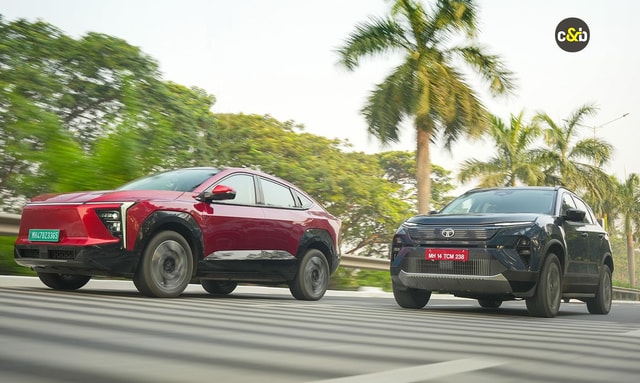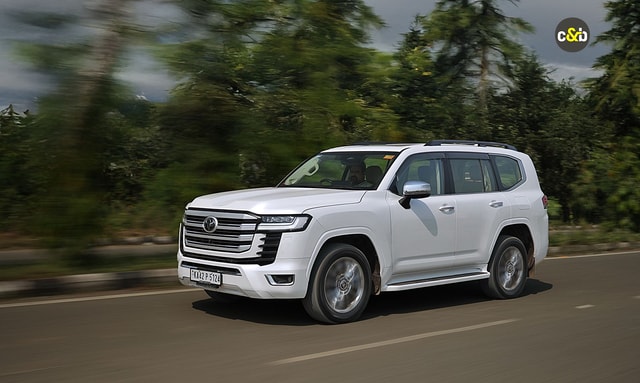Is Zero Depreciation Cover In Car Insurance Worth It? Pros & Cons

Getting a car is often a big financial step, but it's just as essential to keep it safe. Normal car insurance covers damage, but doesn't always pay for the whole repair bill.
Here's where the idea of "zero depreciation" comes in. It claims to cover more things, but it has pros and cons like all financial products.
This article looks at whether this add-on is really worth the money by explaining how it works, listing its pros and cons, and suggesting who might want to buy it.
What Is Zero Depreciation Car Insurance?
In simple words, zero depreciation car insurance ensures that when you file a claim, the refund does not include the cost of parts that have lost value over time. Usually, insurers lower the amount of the claim by considering how parts like metal, rubber, and plastic lose value over time.
This extra gives you the full claim amount for replacement parts, minus the normal fees.
For instance, if your car's bumper requires replacement and is worth ₹10,000, a basic insurance will only pay ₹6,000. If you have zero depreciation cover, you get the full ₹10,000, less any required fees.
How Depreciation Works in Standard Car Insurance
Insurance companies figure out this loss of value over time for every part of a car as depreciation. This has a direct effect on the claim payment.
The following are some examples of normal depreciation rates:
1. Plastic parts: 50%
2. Fibreglass parts: 30%
3. Rubber, nylon, and battery parts: 50%
4. Wooden parts: 5% for the first year, higher after
5. Metal parts: Rate increases yearly (up to 50%)
This means that even though your car is covered, you may have to pay many of the repair costs out of your pocket. This is different from zero depreciation cover.
Benefits of Choosing Zero Depreciation Car Insurance
Adding zero depreciation car insurance gives car owners a number of great benefits:
1. Higher Claim Payouts: Since you don't lose any money on depreciation, you get the most money back for fixes. This cuts down on out-of-pocket costs by a lot.
2. Peace of Mind: People who own cars, particularly those who have just bought a new one, enjoy greater financial security. It mainly covers everything, even expensive part replacements.
3. Better Value for Expensive Cars: Parts for luxury or high-end cars are expensive. With this cover, owners don't have to pay a lot of money for repairs.
4. Ideal for Accident-Prone Zones: This cover ensures you don't lose a lot of money when you make multiple claims if you live in a busy city or an area where accidents happen often.
5. Protection Against Frequent Minor Damages: Glass, bumpers, and plastic parts are easily damaged.
No depreciation means that you will get full repayment for these fixes.
Limitations and Drawbacks of Zero Depreciation Cover
Despite its advantages, this add-on has certain disadvantages:
1. Higher Premiums: Adding zero depreciation cover to your car insurance will raise the total cost by about 15–20%. This might not seem like a good value for some users.
2. Age Restriction on Vehicles: As a rule, insurance will only cover cars that are less than 5 years old. Most of the time, older cars don't qualify.
3. Limited Claims Per Year: A lot of insurance companies only let you make two claims per policy year with this add-on. Claim settlements after that are based on standard depreciation.
4. Exclusions Still Apply: The following are not covered, even under zero depreciation.
○ Engine damage due to oil leakage or water ingress
○ Normal wear and tear
○ Mechanical failures
5. Not Always Worth It for Older Cars: If you have an older car with little value as an asset, it might not be smart to spend extra on this add-on.
Who Should Consider Zero Depreciation Car Insurance?
This car insurance cover isn't right for every car. There are times when it makes more sense:
1. New Car Owners: It keeps your expensive investment safe in the first few years.
2. Luxury Car Owners: This cover is a good deal if you own a luxury car because repairs are expensive.
3. Frequent Drivers: People who drive to work every day or in places with a lot of traffic are more likely to be in an accident.
4. First-Time Buyers: For first-time buyers, it protects their money against the usual problems.
For some, the basic insurance may be enough, especially if they have an older car or don't use their car very often.
Cost vs. Value: Is It Worth It?
1. The most important question is whether the perks are worth the higher price.
2. When It's Worth It: If your car is brand new, driven a lot, or would cost a lot to fix, the higher price is worth it for the peace of mind it gives you.
3. When It's Not Worth It: It might not be worth it to pay extra for this add-on if your car is old, rarely used, or easy to fix.
Value usually beats cost when it comes to money planning. Auto insurance with no depreciation often pays for itself after just one big claim.
Pros and Cons at a Glance
Here is a quick list of this car insurance add-on's main pros and cons to help you choose. This breakdown helps you compare the extra costs to the money you'll save.
Pros:
1. Full claim without depreciation deductions
2. Lower out-of-pocket expenses
3. Best for new and luxury cars
4. Covers frequently damaged parts
5. Financial peace of mind
Cons:
1. Higher premium costs
2. Available only for newer cars
3. Limited claim count per year
4. Specific damages are not covered
5. Not suitable for older vehicles
Expert Tips Before Opting for Zero Depreciation Cover
Before picking zero depreciation car insurance, you should think about both its cost and usefulness. Many people buy it without fully understanding the terms, which can make them unhappy later on.
Making a careful move will help you get the most out of the policy. Before you decide, think about this advice from experts:
1. Check out the changes in premiums between regular plans and policies with no depreciation.
2. Make sure you understand the policy's claim limits and terms.
3. Look at how you drive and how likely you are to get into an accident before you pay extra.
4. Make sure the insurance company has a good track record of paying claims.
5. To get the most out of your cover, you should always weigh how much it costs against how much safety you need.
Conclusion
Zero depreciation cover is a good idea for some car owners, but not for all. It gives you the most claimed benefits and peace of mind, especially for brand-new or high-end cars. But because it costs more and only some cars can get it, it's not as good for older cars.
In the end, the age, worth, and number of kilometres you drive your car will determine whether you should get zero depreciation car insurance. Think about what you need, compare the pros and cons, and then decide if this extra feature is worth the extra cost.
FAQs
1. Does zero depreciation cover damage to the engine?
No, this car insurance add-on does not cover damage to the engine caused by water getting in, oil leaking, or technical problems. There may be a need for a different engine safety add-on.
2. I have an old car. Can I buy zero depreciation cover for it?
Most insurance will only cover cars that are less than 5 years old. Some can stretch it for up to 7 years with conditions, but there aren't many of them.
3. Does zero depreciation cover all kinds of cars?
For private cars, it is usually available. Commercial cars usually can't get this add-on because they pose a bigger risk.
Disclaimer: The above information is for illustrative purposes only. For more details, please refer to the policy wordings and prospectus before concluding the sales.
Trending News
 1 min read10 Most Powerful Super SUVs In India
1 min read10 Most Powerful Super SUVs In India 5 mins readTop 5 Winter Motorcycle Riding Tips
5 mins readTop 5 Winter Motorcycle Riding Tips 9 mins readBest Chauffeur Driven Cars Under Rs 20 Lakh
9 mins readBest Chauffeur Driven Cars Under Rs 20 Lakh
Latest News
 car&bike Team | Dec 7, 2025Harley-Davidson CVO Road Glide, Street Glide Launched In India; Cost More Than A Toyota FortunerLatest additions to Harley-Davidson's India portfolio are two full imports, headlining the brand's model range, packing the company's Milwaukee Eight VVT 121 V-twin engine.1 min read
car&bike Team | Dec 7, 2025Harley-Davidson CVO Road Glide, Street Glide Launched In India; Cost More Than A Toyota FortunerLatest additions to Harley-Davidson's India portfolio are two full imports, headlining the brand's model range, packing the company's Milwaukee Eight VVT 121 V-twin engine.1 min read car&bike Team | Dec 6, 2025Harley-Davidson X440T Launched At Rs 2.80 Lakh: Here's What's NewJoining the existing (but now repositioned) X440 lineup is the X440T, featuring a new rear subframe, ride-by-wire and switchable ABS.1 min read
car&bike Team | Dec 6, 2025Harley-Davidson X440T Launched At Rs 2.80 Lakh: Here's What's NewJoining the existing (but now repositioned) X440 lineup is the X440T, featuring a new rear subframe, ride-by-wire and switchable ABS.1 min read car&bike Team | Dec 6, 2025Tata Sierra Variant-Wise Prices Revealed: Check Out How Much Pure And Adventure Trims CostIn a surprising move, Tata has decided to keep the prices of the range-topping variants of the new Sierra under wraps for a few more days.3 mins read
car&bike Team | Dec 6, 2025Tata Sierra Variant-Wise Prices Revealed: Check Out How Much Pure And Adventure Trims CostIn a surprising move, Tata has decided to keep the prices of the range-topping variants of the new Sierra under wraps for a few more days.3 mins read car&bike Team | Dec 6, 2025MotoSoul 2025: TVS Ronin Agonda Launched; Apache RTX 300 Gets 20th Anniversary EditionThe Ronin Agonda wears a white paint shade with stripe graphics, while the RTX 300 joins the 20th Anniversary lineup of Apache models.2 mins read
car&bike Team | Dec 6, 2025MotoSoul 2025: TVS Ronin Agonda Launched; Apache RTX 300 Gets 20th Anniversary EditionThe Ronin Agonda wears a white paint shade with stripe graphics, while the RTX 300 joins the 20th Anniversary lineup of Apache models.2 mins read car&bike Team | Dec 5, 2025Trump Eyes Production Of Smaller, More Fuel-Efficient Cars In USTrump broached the topic of opening the doors for production of smaller, more fuel-efficient cars – similar to those sold in Japan and South Korea - while announcing a backtrack of CAFE norms set under the Biden administration.2 mins read
car&bike Team | Dec 5, 2025Trump Eyes Production Of Smaller, More Fuel-Efficient Cars In USTrump broached the topic of opening the doors for production of smaller, more fuel-efficient cars – similar to those sold in Japan and South Korea - while announcing a backtrack of CAFE norms set under the Biden administration.2 mins read Preetam Bora | Dec 5, 2025KTM 390 Adventure, 390 Duke, 390 Enduro Recalled Over Engine Stall RiskThe recall for KTM 390 models has been announced to address an engine stall issue, and the engine control unit (ECU) will be updated free of charge in all affected motorcycles.2 mins read
Preetam Bora | Dec 5, 2025KTM 390 Adventure, 390 Duke, 390 Enduro Recalled Over Engine Stall RiskThe recall for KTM 390 models has been announced to address an engine stall issue, and the engine control unit (ECU) will be updated free of charge in all affected motorcycles.2 mins read
 Girish Karkera | Dec 4, 20252026 Honda Prelude First Drive: Domesticated Civic Type RA sporty-looking coupe built to give customers a taste of performance but not at the expense of everyday practicality.5 mins read
Girish Karkera | Dec 4, 20252026 Honda Prelude First Drive: Domesticated Civic Type RA sporty-looking coupe built to give customers a taste of performance but not at the expense of everyday practicality.5 mins read Seshan Vijayraghvan | Nov 29, 2025Mahindra XEV 9S First Drive Review: Big Electric SUV, Bigger ExpectationsThe XEV 9S lands at a time when the EV crowd is growing fast. It’s a big, born-electric, three-row SUV that starts under 20 lakh. It sits close to the XUV700 in size, but the brief is very different. Here’s what it’s like on the road.11 mins read
Seshan Vijayraghvan | Nov 29, 2025Mahindra XEV 9S First Drive Review: Big Electric SUV, Bigger ExpectationsThe XEV 9S lands at a time when the EV crowd is growing fast. It’s a big, born-electric, three-row SUV that starts under 20 lakh. It sits close to the XUV700 in size, but the brief is very different. Here’s what it’s like on the road.11 mins read Bilal Firfiray | Nov 26, 2025Tata Harrier EV vs Mahindra XEV 9e: Battle Of India’s Electric TitansWhen India made two electric SUVs battle it out, the winner is the buyer. They get a choice to take home what’s best suited for them – and read on to find out which one is better for YOU.1 min read
Bilal Firfiray | Nov 26, 2025Tata Harrier EV vs Mahindra XEV 9e: Battle Of India’s Electric TitansWhen India made two electric SUVs battle it out, the winner is the buyer. They get a choice to take home what’s best suited for them – and read on to find out which one is better for YOU.1 min read Janak Sorap | Nov 19, 2025Hero Xpulse 210 Vs Kawasaki KLX 230 Comparison Review: Dual-Sport DilemmaWith a price difference of just Rs 12,000, which of the two dual-sport motorcycles is meant for you?1 min read
Janak Sorap | Nov 19, 2025Hero Xpulse 210 Vs Kawasaki KLX 230 Comparison Review: Dual-Sport DilemmaWith a price difference of just Rs 12,000, which of the two dual-sport motorcycles is meant for you?1 min read Jaiveer Mehra | Nov 17, 20252025 Toyota Land Cruiser 300 Review: Beast From The EastThe Land Cruiser name may have a long and storied history, but does it fit the bill for an Rs 2 crore-plus SUV in India?13 mins read
Jaiveer Mehra | Nov 17, 20252025 Toyota Land Cruiser 300 Review: Beast From The EastThe Land Cruiser name may have a long and storied history, but does it fit the bill for an Rs 2 crore-plus SUV in India?13 mins read



























































































































